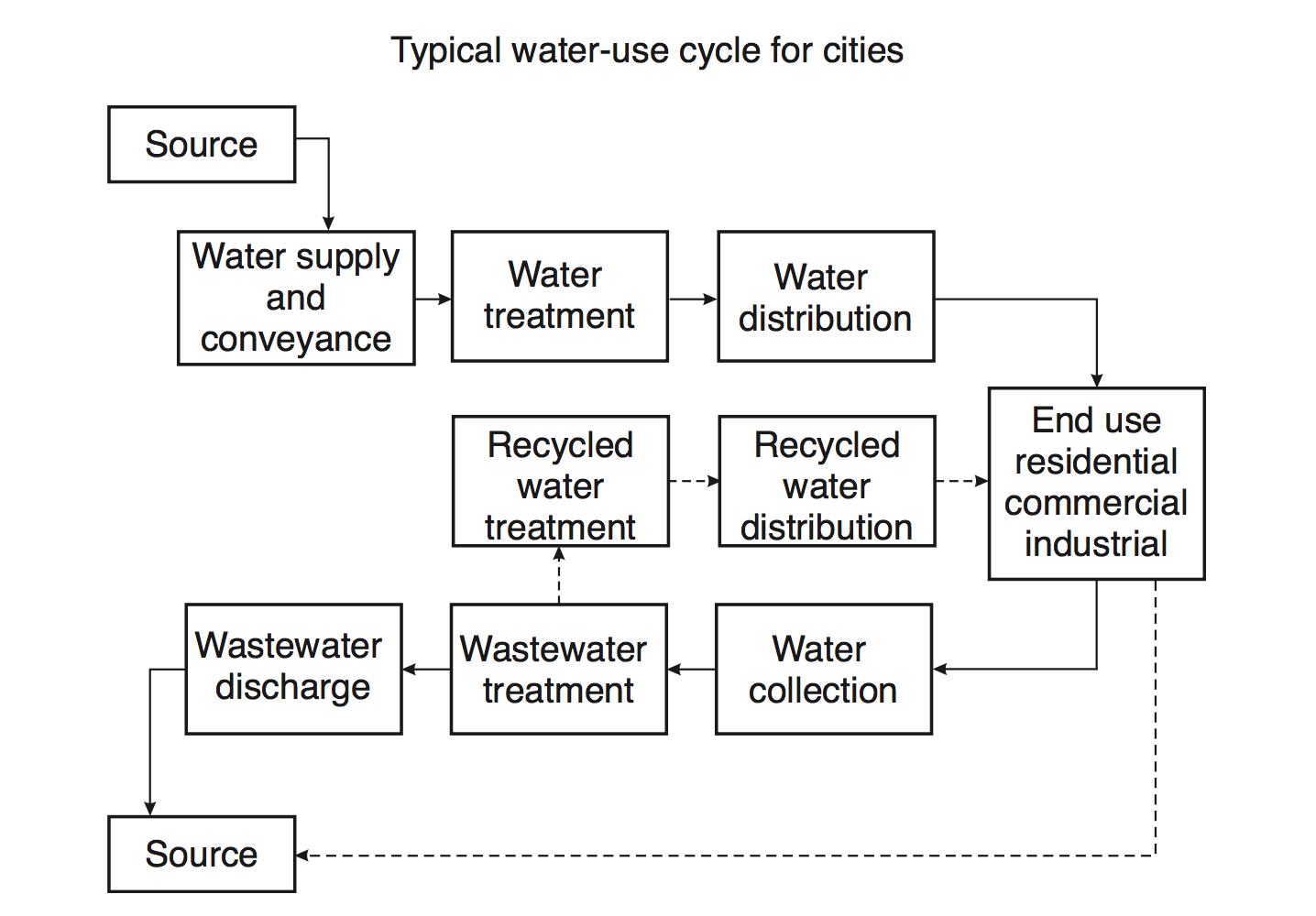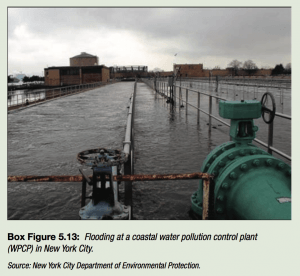Chapter five of the report Climate Change and Cities, part three, talks about climate change, water, and wastewater in cities – more specifically, ways in which water resources/systems in cities across the globe have been affected and how we need to adapt. The chapter includes descriptions of the water supply system and wastewater treatment in four different cities (New York, Mexico City, Lagos, and Santiago de Chile), illustrating a variety of situations in which adaptation to climate change will be needed (keeping in mind that some challenges are more specific to particular cities as opposed to more general challenges). In addition to this, there are two cross-cutting case studies of urban vulnerability in less developed countries that illustrate the centrality of water issues. The sections in this chapter provide a description of the water supply and wastewater treatment sector in cities (including sub-sections on formal and informal water supply and wastewater treatment systems), information on the vulnerabilities and impacts of climate change in urban areas, information on adaptation to climate change for urban water and wastewater systems, information on the mitigation of climate change related to the water sector in cities, and different policy considerations for urban water management (including gaps in knowledge). According to the report, “effective responses to the many challenges that climate change poses to urban water and wastewater systems require a strong understanding of the challenges themselves, of the workings and limits of the urban systems under stresses for which they may not have been designed, of the range of options that are feasible in engineering, economic, and political terms, and of the interactions between the water sector and other sectors also striving to accommodate climate change”. Some important options for the urban adaptation of water and wastewater systems (deduced from the impacts of climate change that emerge from the assessment) include fixing leaks, integrating systems, improving institutions, capturing rainwater, reducing demand, reusing water, establishing water marketing, increasing water banking, incorporating climate change into planning, rationalizing water rights, and developing public–private partnerships.

